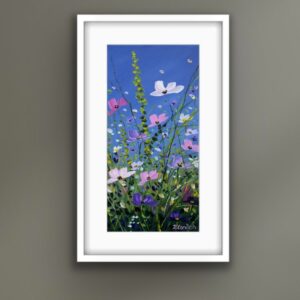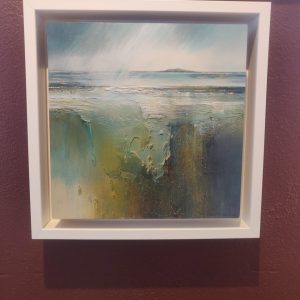Helen Woods – Spray IV
Helen Woods – Spray IV
€450.00
1 in stock
My encaustic paintings are made with beeswax, damar resin (a natural tree sap that acts as a
hardening agent) and shellac burn. I paint in layers, fusing each layer with heat.
Encaustic painting has a long history, dating back to the 5th Century B.C. The Egyptians used
Encaustics to paint portraits of their loved on the surface of Mummies. The word encaustic means to
burn in, which refers to the process of fusing the paint. Beeswax is impervious to moisture, it will not
deteriorate, it will not yellow or darken. Encaustic paintings do not have to be varnished or
protected by glass.
How to care for your encaustic artwork:
Treat an encaustic painting as you would any fine art. Use care hanging, transporting or storing a
painting.
Consistent Temperature – Hang and store at normal room temperatures. Avoid freezing and
extremely hot temperatures; wax will melt at 150°F / 65°C.
Avoid Direct Sunlight – like all artwork encaustics should be kept out of direct sunlight.
Transporting a painting – When packing encaustic art for transportation, cover the face of the
painting with tissue paper then wrop.
Framing – Encaustic does not need to be protected by glass. A floater frame is an attractive option
that also protects the edges of the painting from scratches, dents and chips. Works on paper may be
framed under glass; ensure the glass is not in contact with the artwork.
Curing – During the first 6-12 months, as the wax cures, an encaustic painting may develop bloom.
Bloom is a naturally occurring hazy white residue. It may also occur if a painting is exposed to cold.
Bloom can easily be removed by buffing the surface of the painting. Encaustic paintings can be
buffed to a high gloss using a soft, lint-free cloth or a pair of tights. If the original sheen has become
dull over time, it can be brought back by repeating the buffing process.
Additional information
| Weight | 15 kg |
|---|---|
| Dimensions | 53 × 5 × 53 cm |




